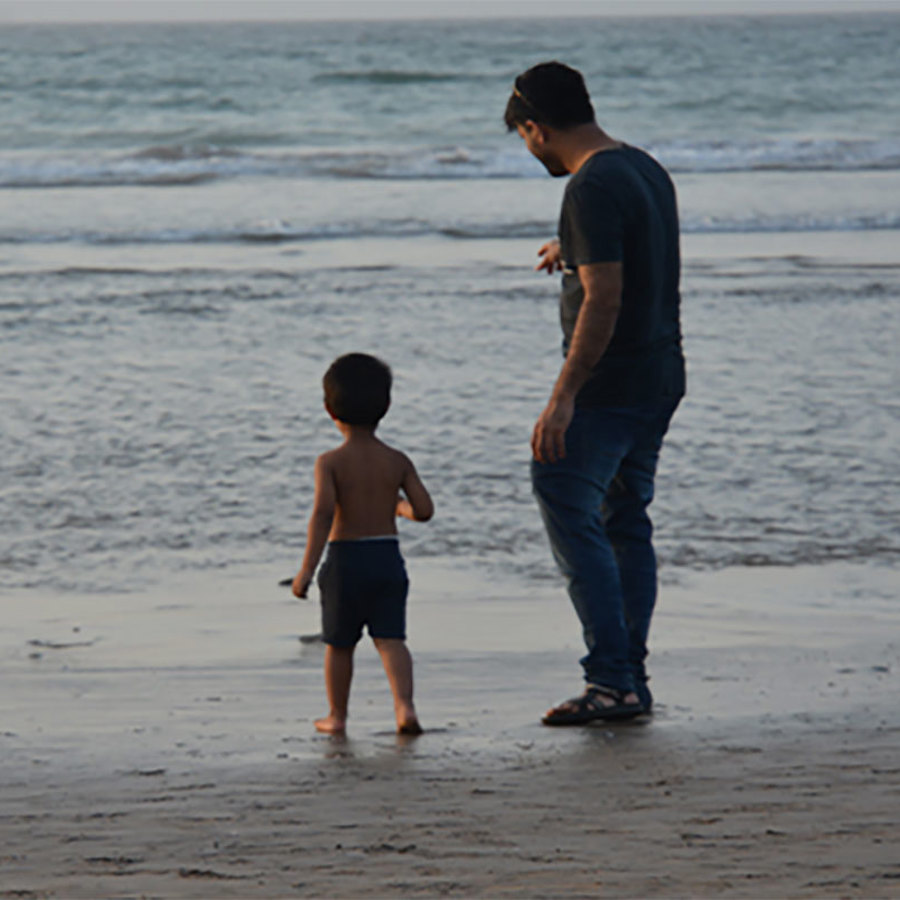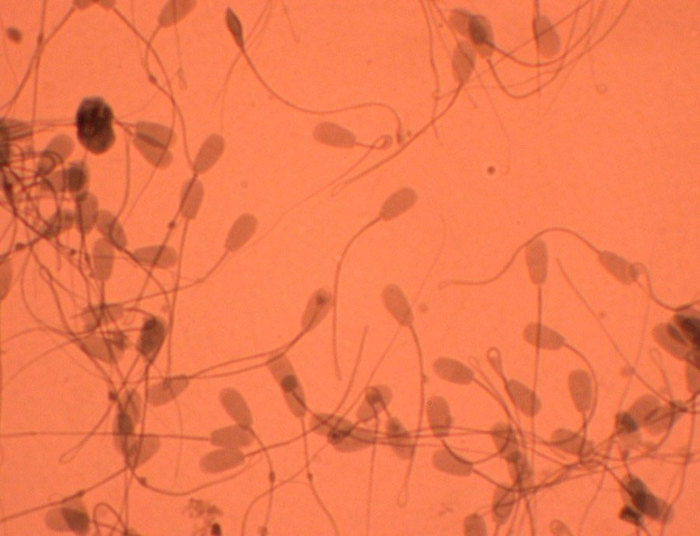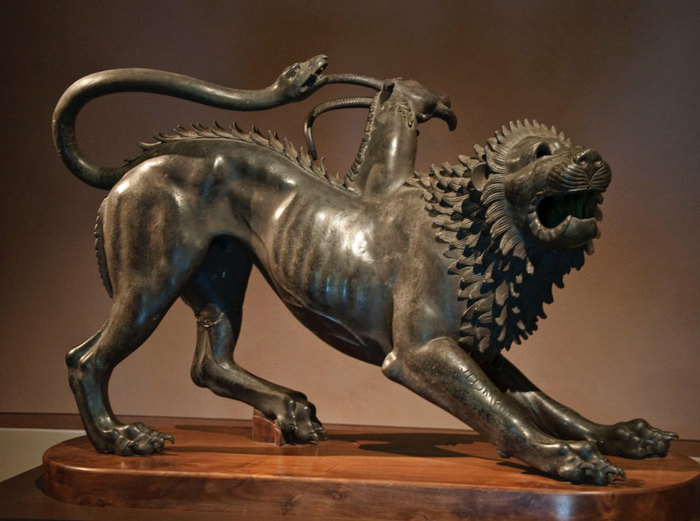
Is it possible for a DNA paternity test to be wrong? In what circumstances might this happen?
November 30, 2006

- Related Topics:
- Paternity tests,
- Consumer genetic testing,
- Mutation,
- Chimera,
- Rare events
A curious adult from the United Kingdom asks:
“Is it possible for a DNA paternity test to be wrong? In what circumstances might this happen?”
Yes this is possible. No test is 100% foolproof. DNA tests are just better than any of the other tests out there.
I am no expert on these tests but four possibilities immediately come to mind: human error, related dads, DNA mutation, and chimerism. By far, the most common of these has to be human error.
By human error I mean a mix up in DNA samples. For example, someone mislabels the two potential dads’ DNA samples.
Or maybe the samples become contaminated. Or the paternity testing facility doesn’t do the test carefully.
And there are other ways to mess up one of these tests as well. This is why it is so important to find the right company to do a paternity test. If you suspect this sort of error, your best bet is probably just to have a test redone, possibly with another company.
Other ways for a DNA test to be wrong would be much less common. But there are some rarer ways the tests could be inaccurate, which I’ll go over next.
Close relatives
One is if a potential dad is related to the real dad.
Imagine that the dad could be either of two brothers. But only one brother is tested and he isn’t the dad.
The paternity test might show him as the father anyway. Why? Because brothers share an awful lot of DNA.
What this means is that a baby shares a lot of DNA with an uncle as well. And DNA tests only look at a small bit of our DNA – something like 1/6,000,000th (one six millionth) of it at best.
Two brothers will share DNA at these sites more often than if they weren’t related. So an uncle might look like a dad with standard DNA testing.
This is why DNA testing companies ask that you are upfront if a relative might be involved. They can then do additional testing that can tell an uncle from a father.

DNA Mutation
The next two possibilities are real but rare. One of these is DNA mutation.
DNA mutations are changes in our DNA. These happen all the time. They can happen when a sperm is being made. Or when a cell divides. Or when sunlight hits a cell. There are lots of ways our DNA can be changed.
Pretty obviously DNA changes can affect the results of a DNA paternity test. Imagine that a man fathers a child with a sperm that has a DNA mutation. This DNA mutation will make the child different from the father at one particular DNA spot.
Now to affect the paternity test, the change would have to happen in the part of the DNA that is tested. In other words, with 6 billion letters to choose from, the mutation has to happen in the right place. This is pretty uncommon.

And just being different at one spot isn’t enough. DNA paternity tests look at many DNA sites.
For red flags to go up, there have to be at least two spots that are different. You need for two changes to happen in two specific different places at the same time. This is even less likely.
But it does happen. The sites used by DNA testing companies have relatively high mutation rates. The numbers I’ve seen say the average is 1 in 500.
So the chances for mutations to happen in two spots are around 1 in 250,000. Of the over 4 million babies born in the U.S. each year, 16 of them would be predicted to have mutations at two sites.
And most likely the number is actually higher than this. Why?
First off, not all sites get DNA changes at the same rate. Some get DNA changes less often. And some get them more often.
The highest rate I’ve seen is around 1 in 100. A couple of sites like this can bring the number of babies born with double mutations up to 400/year.
Another factor that can increase the chances for a mutation is the age of the dad. The older the dad, the more likely there is to be a DNA change in his sperm.

So as dads get older, the chances go even higher that there will be a double mutation. There isn’t an exact number for how much a father’s age affects the chances for a mutation. But we do know that it goes up.
And it is important to mention that the mutation rates at the sites tested haven’t been looked at exhaustively, at least not in the scientific literature. The mutation rates are based on a few studies and so may be off.
Now DNA testing companies are aware of all of this. A good company will order additional testing if there are two differences. At least if the differences are small.
Big differences aren’t usually the result of DNA mutation at these sites. The DNA used is called short tandem repeats or STRs. Here is an example of an STR found on the Y chromosome:
TCTGTCTGTCTGTCTATCTATCTATCTATCTATCTATCTATCTATCTATCTA
What a mess! To make it simpler, scientists write it out like this:
(TCTG)3(TCTA)10
This just means that there are three repeats of TCTG and 10 repeats of TCTA. This sort of thing not only confuses us, but it confuses our cells too.
When our cells start copying this DNA (as they do when a cell divides), the cell’s machinery can sometimes lose its place. Often a cell will put an extra copy in or take one out. Very rarely they’ll put in or take out two repeats. More than two is rarer still.
So if there are two changes by a single repeat (called double exclusion), a company should definitely do further testing. But what if one of the changes is a double repeat? Or there are three changes?
Whether to get additional testing would depend on the situation. For example, if the potential dad is 75 and the changes are in sites with a high mutation rate, additional testing might be warranted.
Chimera Dad
The final off-the-top-of-my-head example is probably the most rare – chimerism. A chimera is really like two siblings rolled up into one person.
Imagine that a mom is going to have fraternal twins. Fraternal twins happen when two different eggs are fertilized by two different sperm. These twins are no more similar than any siblings.
Now imagine that at a very early stage, these twins fuse together to make a single person. This single, fused person is a chimera.
Let’s say at the fusion stage, there are 8 cells from each sibling. These 16 cells divide and divide until there are the trillions of cells that make up a baby.
Half of these trillions of cells will come from one sibling and half from the other. Let’s say that one sibling’s cells were responsible for all of the chimera’s sperm. And the other sibling’s cells were responsible for cheek and blood cells.

Now the chimera fathers a child. To test if he is the father, the testing company looks at the DNA of his cheek cells. Or his blood.
Because the DNA in the tested cells is different from the DNA in the sperm, there is a chance that the test may not identify the man as the father. Why only a chance?
Because the different DNAs came from two people who would have been siblings if they hadn’t fused together. And as we talked about, brothers can sometimes not be told apart with standard DNA testing.
So the chimera might come out looking like the dad. Or he might not. Further testing in this case would rule him out as the dad!
No one knows how common chimerism is but it is thought to be pretty rare. So this scenario might not happen too often. But it is a formal possibility.
In conclusion ...
Sorry for the long answer. As you can see, there are a number of ways a DNA paternity test can be wrong. With the exception of human error, most cases would probably be pretty rare.
More work definitely needs to be done in this field to figure out how rare. How common are chimeras? What are the mutation rates at the various DNA sites the companies test for? Do some sites more commonly gain or lose two or more repeats? What are the specific numbers for how much age affects a man’s mutation rate at these particular sites?
Until these questions are answered, we won’t know how common these sorts of false positives and negatives are. Hopefully scientists are working on this as we speak.

Author: Dr. D. Barry Starr
Barry served as The Tech Geneticist from 2002-2018. He founded Ask-a-Geneticist, answered thousands of questions submitted by people from all around the world, and oversaw and edited all articles published during his tenure. AAG is part of the Stanford at The Tech program, which brings Stanford scientists to The Tech to answer questions for this site, as well as to run science activities with visitors at The Tech Interactive in downtown San Jose.
 Skip Navigation
Skip Navigation
